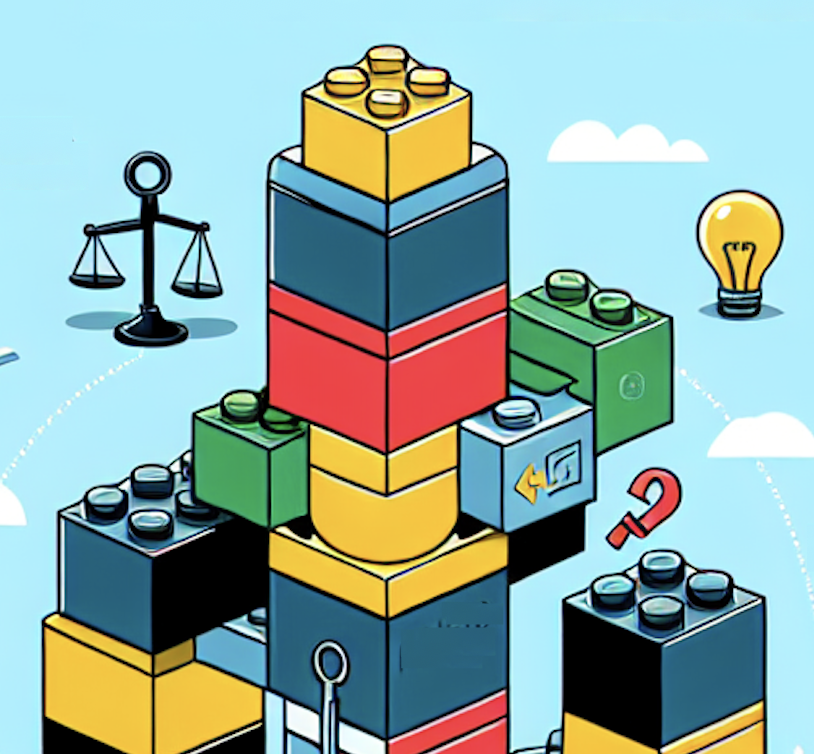
Simulation-Based Learning: Why & How practice beats slides & notes?
Picture this: You’re onboarding 500 fresh hires at an IT services firm. Day 1, they buckle up through slides on cloud computing, customer escalation, and compliance. Day 30, you shadow one on a live support call—they fumble, pause, flip through notes. Sharp minds, but no muscle memory. Welcome to the Forgetting Curve—without practice, we forget most of what we learn.
Now imagine replacing that deck with a weekly live-systems simulation: troubleshooting outages, escalating tickets, restoring services. Suddenly, they do the job—not just know it. That’s how simulation rewrites the forgetting curve: practice embeds, whereas learning content & notes evaporate.
How Simulation Leverages Learning Science minus any lecture voice?
From Recall to Creation
Ever asked, “What port does HTTPS use?” That’s Bloom’s base level: remembering. But when a real client says, “Our web payments are failing,” you need application, maybe even creation of new rules or alerts. Simulations drag learners up Bloom’s Taxonomy—from recall to real problem-solving—without them realising they’re climbing the pyramid.
70-20-10, But Simulation Hits the Sweet Spot
Most learning happens on the job—not in classrooms. The 70:20:10 model points out that 70% of learning is experiential, 20% social, only 10% formal (Lombardo & Eichinger, 1996). That deck/training content you pushed out lives in the 10%. Simulation jumps you straight into the 70%—immersive, actionable, job-relevant.
Errors That Teach, Not Punish
A call-center agent fumbling through a heated customer interaction can’t face real consequences—unless it’s practice. That’s Behaviorism (reinforcement of correct responses) meeting Constructivism (learning through doing). And when you debrief after, that completes Kolb’s Experiential Learning cycle: experience → reflect → conceptualise → reapply (Kolb, 1984).
Learning from Each Other
If you were to drop five trainees into a joint simulation; they’ll immediately copy the smartest one’s method. That’s Social Learning Theory—we model behaviour when the stakes rise (Bandura, 1977). Simulations magnify that peer learning in action.
Real Work for Real Adults
Adults demand relevance. Andragogy (Knowles, 1980) says: no theory, only problem-centered learning. A Kubernetes cluster crash simulation is the adult version of “This is not abstract—it’s actual.” That autonomy, relevance, and competence invoke Self-Determination Theory, powering motivation (Deci & Ryan, 1985).
Why does Training Need Simulation?
Risk Mitigation: Trainees practice in a risk-free environment, enabling them to experiment and learn from their decisions without impacting the organization’s bottom line. For example, in financial services, simulations of market events help employees understand crisis management without real-world repercussions.
Enhanced Retention: According to a study by the Journal of Applied Psychology, simulation-based training can increase knowledge retention rates by as much as 60%. The active involvement in realistic scenarios cements concepts more effectively than passive learning methods.
Immediate Feedback: Simulations offer real-time evaluation, allowing learners to adjust and refine their strategies on the fly. Tools like virtual coaching and analytics dashboards help identify weaknesses and measure improvement accurately.
Cost Efficiency: While initial setup costs may be higher, simulations can lead to significant long-term savings by reducing the need for costly live training sessions and minimising operational errors. In customer service, errors cost downtime, SLA hits, client churn. Yet most of the current training remains theoretical. Here are a few that work better with simulation.
-
Cybersecurity drills: live phishing simulations train staff under pressure, not just quick slides.
-
Cloud resilience: DevOps engineers practice rollback procedures in game-like labs—not vague diagrams.
-
Customer de-escalation: agents handle angry avatars instead of reading scripts.
Deloitte notes a 75% increase in demand for simulation and simulation software skills in manufacturing and tech-enabled roles Deloitte. Simulations aren’t nice-to-have—they’re what the job looks like now.
Is this a proven fact?
-
A study by the The Journal of Interactive Learning Research (JILR), found business simulations increased knowledge retention by up to 75% and boosted performance by 25% versus traditional methods
-
PwC’s Virtual Reality study: learners completed training 4× faster, were 275% more confident, 3.75× more emotionally connected, and 4× more focused than classroom or e-learn peers—and VR became 52% cheaper at scale (~3,000 learners)
Simulation Platforms at the helm of Learning
Zenarate AI Coach, simulates AI-driven customer interactions—attack vectors that shift tone and intent like a real client. Learners achieve 33% faster speed-to-proficiency in complex service calls. VirtualSpeech comes with a role play studio suitable for training different roles, across industries by customising the roles in minutes. Mursion, blends AI avatars and human trainers to replicate emotional intensity in customer escalation training. ITES firms report 18% improvement in first-call resolution. Skillable delivers over 30 million hands-on IT labs—real-world tasks in safe sandboxes. One of their major IT services client cut certification prep time by 40%. Neovation offers immersive learning paths that can be created, for targeted skill building complete with branching & feedback.
Testimonials from organisations emphasise how simulation training drives confidence, retention of complex skills, and measurable performance improvements. Employees report increased readiness for real work challenges and better decision-making abilities
Right now, simulations are to an extent pre-scripted. But with generative AI:
-
Customer avatars respond unpredictably.
-
Cyber drills morph based on your moves.
-
Troubleshooting labs spawn fresh errors, modelling real pandemonium.
Training becomes not just repetitive—but adaptive, unpredictable, and true-to-life. As AI embeds itself into enterprise workflows, simulations will shift from “nice to have” to default mode.
Don’t just teach people where the buttons are, how to click, what to say; teach how to think. In reality where systems are complex and clients unforgiving, simulation isn’t optional. It’s how we make training real. So when the pressure mounts, people aren’t just well informed; they’re ready.


